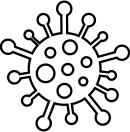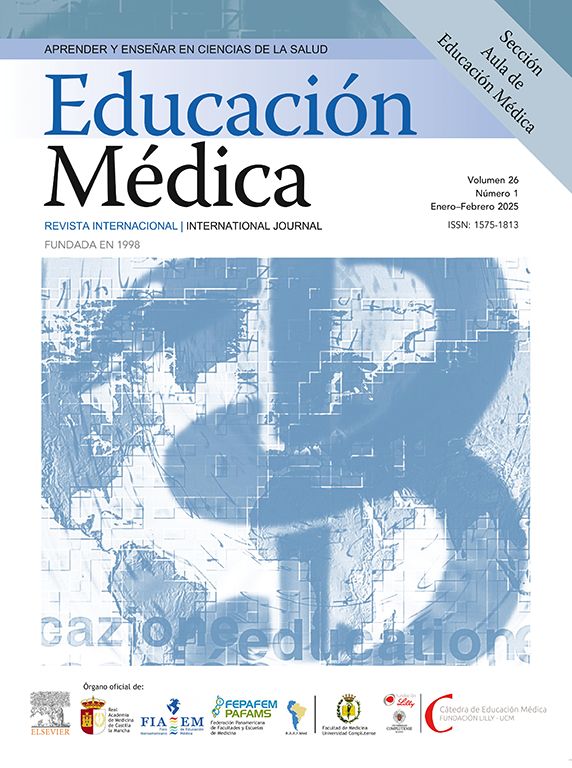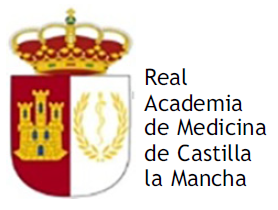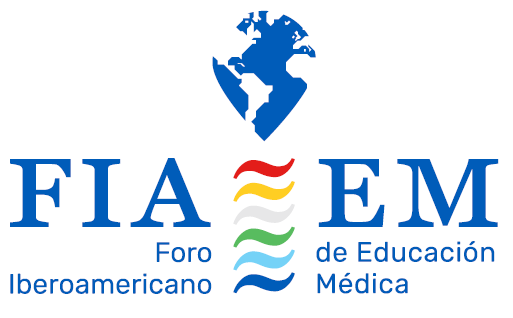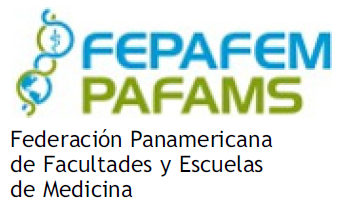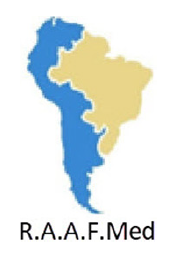Limited academic literature has reviewed the usefulness of Instagram and TikTok, which degree students extensively use. Considering this gap, our research group has undertaken a study aimed at elucidating the perspectives of health sciences university students regarding the referred social media as learning tools.
MethodsAn online 23-question survey was distributed to undergraduate health sciences degree students across three Spanish universities. The questions were primarily related to the general usage of social media within the university educational environment, but they focused on Instagram and TikTok.
ResultsStudents identified Instagram (68%) and YouTube (39%) as the most comfortable social networks for learning. Seventy-five percent of students indicated that they followed Instagram accounts about medicine or nursing, with 47% of these accounts lacking apparent university affiliations. One in three students followed TikTok accounts associated with medicine or nursing, with 63% of these accounts appearing to be non-university affiliated.
ConclusionsMedical and nursing students are interested in seeking practical supplementary learning content from non-academic sources, particularly on the newest social networks like Instagram and TikTok. Improving the understanding of such content by university faculty can improve the guidance offered to students of such information.
Existe una limitada literatura académica en relación con la utilidad de Instagram y TikTok, que sin embargo son muy utilizadas por los estudiantes de grado. Teniendo en cuenta esto, nuestro grupo de investigación ha llevado a cabo un estudio destinado a evaluar la percepción de los estudiantes universitarios de ciencias de la salud con respecto a las referidas redes sociales como herramientas de aprendizaje.
MétodosSe distribuyó una encuesta en línea de 23 preguntas a estudiantes de grado de ciencias de la salud de tres universidades españolas. Las preguntas estaban relacionadas principalmente con el uso general de las redes sociales en el entorno educativo universitario, pero se centraron en Instagram y TikTok.
ResultadosLos estudiantes identificaron Instagram (68%) y YouTube (39%) como las redes sociales más cómodas para aprender. El 75% de los estudiantes indicó que seguía cuentas de Instagram sobre medicina o enfermería, y el 47% de estas cuentas carecían de afiliaciones universitarias aparentes. Uno de cada tres estudiantes seguía cuentas de TikTok asociadas con medicina o enfermería, y el 63% de estas cuentas parecían no estar afiliadas a la universidad.
ConclusionesLos estudiantes de medicina y enfermería están interesados en buscar contenido práctico complementario de aprendizaje en fuentes no académicas, en particular en las redes sociales más nuevas como Instagram y TikTok. Mejorar la comprensión de dicho contenido, en particular por parte del profesorado universitario, puede mejorar la orientación ofrecida a los estudiantes de dicha información.
In recent years, literature has increasingly focused on the role of social media (SM) in health sciences education. Platforms such as Instagram, Twitter, YouTube, and TikTok have been explored for their potential to facilitate learning through dynamic, interactive environments that resonate with students in a technology-driven world. While many studies highlight the advantages of these platforms over traditional teaching methods, some scholars question the credibility of social media content due to concerns about accuracy and reliability.1 This issue is critical in health sciences, where the accuracy of information can have significant implications.
Social media use has become so ingrained in students' daily lives that health sciences education is no exception. Instagram, YouTube, and TikTok are the most used social media outlets to supplement their formal learning. Such platforms provide students with rapid, quick access to a wide range of information and opportunities for peer learning in comments, discussions, and content sharing.2
Health sciences students are becoming increasingly disposed to using social networks for their learning. In essence, the platforms through which they participate in their personal lives are being repurposed for educational purposes. This is not a single-platform phenomenon but has branched into various forms across different social media environments, each with its features to cater to learners' different tastes and preferences. Such use of platforms in an education setting seems to be quite personal, considering how each person may have their own preference and learning style.3 Be that as it may, this realization has made educational institutions accept and respect their students' preferences in exploring how best they can learn.4
Social media platforms help develop students' critical thinking and media literacy skills. Engaging as an informed online citizen necessitates the ability to verify the credibility and accuracy of information.5 Research has suggested that students should be taught to critically engage with social media content.6 While misinformation remains a concern, equipping students to navigate and evaluate the content they encounter on social media is becoming an essential part of health sciences education.
Literature shows that the study of some platforms is more delved into than others. While social media like Twitter and YouTube have been highly researched, fewer studies have focused on Instagram and TikTok, which students in higher education commonly use for learning. Instagram adds the features of visual and moving images, while TikTok uses short-form “snack” videos, making them increasingly popular to adopt in pedagogical practices.7 Instagram can assist in connecting students and their peers as well as with their teachers, foster informal learning, and enhance student engagement in an online setting, which are critical educational objectives.8 Klhaif et al. recently stated that designing and delivering creative learning content using TikTok can benefit pedagogical methodologies based on nano-learning principles, thereby facilitating the creation of high-quality e-learning content.9 However, scholarly analysis of the use of these methods within health sciences education has been relatively scant.10
Recognizing this gap in the literature, our study aimed primarily to understand health sciences students' perceptions of the usefulness of Instagram and TikTok in university learning. As a secondary objective, we investigated health sciences students' general perception of the usefulness of social networks.
Material and methodsThis prospective, cross-sectional research study evaluated the use of Instagram and TikTok in undergraduate Health Sciences (medicine and nursing) (HS) students across various Spanish universities. A modified Delphi method was used to design the survey. Three authors (GC, GR, PG) with experience designing questionnaires reacted to a previously prepared survey (FG) in an online and anonymous reactive Delphi technique. After three rounds in which the authors suggested changes to the proposed questions and possible answers, consensus was reached on a final version of the survey.11 Participation was voluntary and open to students in any year of their degree program. The survey consisted of 23 questions, primarily featuring categorical variables related to the usage of social networks within the university educational environment. Question P3 specifically utilized a Likert scale for responses. The survey was accessible through the SurveyMonkey platform (https://www.surveymonkey.com), and completion time was approximately 15 min. Participants were informed of the voluntary nature of the survey.
Different response options were available for various questions in alignment with their respective purposes. No demographic data was collected to prevent overburdening participants and avoid profiling the student population. The survey was available throughout the first semester of 2023. A limited number of questions were used to encourage participation, focusing on students' interest in receiving educational messages via social networks, the most suitable social network for this purpose, and their preference for teacher-student interaction on these platforms. Subsequent inquiries delved into students' perspectives on using Instagram or TikTok as educational tools. The survey, included in Appendix 1, was disseminated through posters in university centers and relevant social networks.
Approval for the study and associated documents, including the respondent information sheet (Appendix 2), was obtained from the University of Navarra Ethics Committee under code 2022.200. Categorical questions were statistically analyzed to determine frequencies and percentages, while the statistical relationship between qualitative variables was assessed through cross-tabulations and chi-square calculations. Likert scale responses were analyzed for central tendency, mean, median, and interquartile range measures. The statistical package IBM SPSS Statistics® (IBM SPSS, version 29, Chicago, IL, USA) has been used for statistical analysis.
ResultsThe survey encompassed responses from 189 medical and nursing students across four universities in Spain, namely Universidad de Navarra, Universidad Francisco de Vitoria, Universidad Pontificia de Salamanca, and Universidad Europea de Madrid. Most participants pursued a degree in medicine (119; 63%), while the remainder were enrolled in nursing programs. Notably, 54% of medical students were in their final year, and 68.5% of nursing students were in their second or third year.
The findings indicated that 88% of students perceived social networks as valuable in university teaching. The rating of utility using a Likert scale showed a median value of 3 (interquartile range 3–4). The prevalent SM used for personal purposes were WhatsApp (91%), Instagram (90%), and YouTube (65%). As for learning, Instagram (65%) and YouTube (54%) were the preferred SM among students in the Health Sciences program, with 35% reporting using TikTok. Moreover, Instagram (68%) and YouTube (39%) were identified as the most comfortable SM for learning. Detailed results are presented in Table 1.
Summary of results on the use of social networks for personal use and for learning by health degree students.
| Social networks (n = 189) | For personal use [n (%)] | Social networks that you use to learn in the grade you are studying [n (%)] | Social networks that I would prefer for learning [n (%)] |
|---|---|---|---|
| 75 (40) | 47 (25) | 30 (16) | |
| 21 (11) | 7 (4) | 2 (1) | |
| 170 (90) | 122 (65) | 129 (68) | |
| WhatsApp Groups | 172 (91) | 63 (33) | 44 (23) |
| YouTube | 123 (65) | 102 (54) | 73 (39) |
| TikTok | 92 (49) | 67 (35) | 64 (34) |
| Podcasts | 37 (20) | 28 (15) | 22 (12) |
| Twitch | 18 (10) | 2 (1) | 4 (2) |
| No use of social networks | 2 (1) | 17 (9) | 4 (2) |
Over 52% of students expressed the desire for teachers to be accessible through social networking sites, and 60% sought information dissemination and interactivity through these platforms. Additionally, 55% of students expressed an interest in receiving educational content via social networking sites. Table 2 outlines further insights into students' perspectives on the utility of SM.
Students' perception of the usefulness of social networks.
| n (%) | |
|---|---|
| Usefulness of social media as an educational tool: | 166 (88) |
| Yes | 13 (7) |
| No | 10 (5.3) |
| NS/NC | |
| Quantifying the usefulness of social media in learning (Likert scale 1–5) | 3.2 ± 1.1 |
| Accessibility for teachers through social networks: | |
| Yes, I would like everyone to have it, and then I can choose who to follow. | 98 (52) |
| No, I'm not interested at all | 21 (11) |
| I don't care | 70 (37) |
| Relationship with teachers through social networks: | |
| I would just like to receive information and not interact. | 45 (24) |
| I would like to receive the information and be able to interact with the teaching staff. | 112 (60) |
| I would like to receive information, interact and be graded on my answers. | 31 (16) |
| How do you prefer the relationship with social networks to be in relation to learning? | |
| He prefers that the teachers create the learning material channeled through a social network. | 58 (31) |
| I prefer to be the one who chooses the source of learning through social networks. | 7 (4) |
| I prefer to have both options, having my teachers create material, but also being able to search for my own sources. | 123 (65) |
| How much content would you like to receive from a learning-oriented account: | |
| 1 message a day | 70 (37) |
| More than 1 message per day | 104 (55) |
| 3–4 messages per week | 15 (8) |
| Format of training pills: | |
| Content in text format only | 3 (2) |
| Text content associated with images | 22 (12) |
| Content only in visual format (images, photos) | 18 (10) |
| Content only in visual format (videos) | 16 (9) |
| Content in the form of thought-provoking questions (quizzes, etc.) | 6 (3) |
| A mix of all the options | 124 (66) |
| Sending educational pills through different social networks: | |
| Yes | 104 (55) |
| No | 51 (27) |
| NS/NC | 34 (18) |
Almost half of students (47%) acknowledged a lack of a critical perspective grounded in scientific evidence when engaging with information on social networking sites. Additionally, 75% of students indicated that they followed Instagram accounts about medicine or nursing, with 47% of these accounts lacking apparent university affiliations. Students' motivations for following these accounts ranged from curiosity and engagement (67%) to knowledge reinforcement (44%) and acquisition of practical information beyond their formal curricula (33%). A comprehensive breakdown is presented in Table 3.
Use of Instagram and TikTok for health degree learning.
| n (%) | |
|---|---|
Do you follow anyone on Instagram to learn medicine/nursing?
| 142 (75) 47 (25) |
Is the Instagram account promoted from a university perspective?
| 50 (28)83 (47)44 (25) |
What does following healthcare influencers on Instagram bring to you?
| 84 (44)72 (38)127 (67)71 (38)8 (4.2)12 (6.3) |
Do you follow anyone on TikTok to learn medicine/nursing?
| 65 (34)124 (66) |
Is the TikTok account promoted from within the university? (n = 132)
| 13 (10)83 (63)36 (27) |
What does following healthcare influencers on TikTok bring to you?
| 36 (19)34 (18)64 (34)37 (20)4 (2,1)11 (5.8) |
Concerning TikTok, one in three students followed accounts associated with medicine or nursing, with 63% of these accounts appearing to be non-university affiliated. Like Instagram, students highlighted curiosity and appeal as primary motivations for following these accounts. Additional details can be found in Table 3.
Furthermore, the data revealed that a higher percentage of nursing students following Instagram (87% vs. 67%; p = 0.001) and TikTok (49% vs. 26%; p = 0.02) accounts for educational purposes compared to their counterparts in medicine. These distinctions constituted the only statistically significant differences between the two cohorts for each survey question, calculated using Chi-square.
DiscussionIn our research, we observed that undergraduate students in the field of health sciences who answered this survey commonly use social networking platforms, such as Instagram and TikTok, as supplementary resources to augment their formal education. Notably, the information sought on these platforms emanates from professionals outside of academia, predominantly from medicine and nursing, rather than university faculty. Moreover, it is noteworthy that almost 90% of students in Health Sciences regard social media as a valuable adjunct to their university learning.
The results from our survey indicate that a relatively small percentage of students actively engaged with bio-sanitary accounts on social media platforms solely for leisure purposes. This suggests that HS students who answered this survey predominantly use social media for educational and professional development. This observation is consistent with Price et al. findings from a study involving British nursing students, where the majority expressed satisfaction with using SM to facilitate discussions and share information, highlighting its appeal as an engaging educational tool.12 The development of SM has opened new possibilities for creating applications geared towards the student community. These applications extend the original concept of “communities of practice” proposed by Lave and Wenger. Moreover, they provide a means to expand beyond traditional university teachings by establishing a virtual community of practice.13
Our research group published a paper in 2021 where we described the degree of inclusion students in health sciences give to SM within their educational routine.14 We observed that over 80% of the students wanted to use SM for learning. We stated that the favored SM platforms the students chose to make use of for studying purposes were, respectively, Instagram and YouTube—likely because their visual and video-based formats apply to the student's preference for a learning environment that is more interactive and engaging.14 Interestingly, we found that Twitter, now named “X,” was used more by professionals freshly in clinical practice than by students. That indicates the preference for platforms may change at different levels of the profession, with professionals using Twitter more to network, keep themselves updated with current research, and engage with the greater health community.15 This reflects findings in the literature indicating that SM can serve different educational functions depending on a user's career.16,17
The role of Instagram and TikTok in higher education has been less studied than other platforms. Though the study by Sterling et al. showed what a good resource YouTube could become for medical education, few works have been performed so far with the involvement of resources such as Instagram and TikTok.18–21 With their unique affordances, especially in presenting information in more engagingly visual and concise ways, the platforms can enhance learning in the health sciences, particularly in areas where learning involves high loads of visual processing, such as anatomy and surgery.22–24
Informal learning through casual interactions with educational content on SM is increasingly recognized as a vital component of students' learning experiences.18 Preliminary findings suggest that students utilize both Instagram and TikTok in ways that extend beyond traditional educational purposes.25–27 For instance, many students follow health professionals who share tips and tutorials related to their field experiences. This form of informal learning enhances the more formal content they receive in lectures and textbooks, providing insights into practical aspects of health that are often inadequately addressed in conventional curricula.28 Although the aim of this study was not to measure the impact of this interest on non-university professionals, the authors of this article consider that this should be more positive than negative. This opinion is based on the fact that students take the initiative to contact professionals in their environment, which is positive and can also promote specific learning absent in their teaching curriculum.
TikTok and Instagram can be regarded as microlearning platforms with educational values. Studies have demonstrated the effectiveness of Instagram in enhancing both knowledge and confidence related to procedure performance.29 In this research, Instagram emerges as one of the top two most utilized social platforms for personal use and the favored choice for educational purposes. Instagram is a SM platform enabling users to establish individual profiles and exchange public and private messages. Its distinct feature lies in sharing images or videos with or without accompanying audio, complemented by textual elements. The study indicates that three-quarters of students follow educational Instagram accounts, often external to their academic institution. Notably, within the nursing program, Instagram has proven effective in leveraging gamification to enhance learning outcomes, receiving a favorable reception from 72% of students.30 Many of the participants in our research exhibited a keen interest in bio-sanitary content and aimed to reinforce the existing knowledge acquired in their respective academic disciplines. Previous undergraduate studies have examined the impact of Instagram, yielding favorable outcomes, particularly in the context of learning dental anatomy.25 The primary advantage of Instagram, compared to other social networking platforms, lies in its emphasis on visual content, specifically photos and videos. This quality proves particularly beneficial for topics that rely heavily on visual representation, such as anatomy or radiology.31
TikTok has become a significant social networking platform in university education, mainly undergraduate health studies.10,32 The demographic of TikTok's audience skews young, with 63.5% of users under 24. As a result, the platform holds significant relevance for HS students.33 The platform is tailored for mobile usage, with all videos optimized for portrait orientation and a maximum duration of 10 min. Users have the option to incorporate text and effects into their videos. The mobile application features an algorithm that suggests videos based on users' viewing and browsing history. Notably, the percentage of students following a TikTok account for educational purposes, as opposed to following an Instagram account, was lower but still significant at 66%. We lack a clear rationale for the higher percentage of nursing students following TikTok content than medical students, which may be attributed to the availability of more relevant content on SM.
Nursing students use the social networks studied the most. No bibliography justifies this greater interest, but it probably derives from more techniques and practical aspects of the health specialty.
Our study identifies two primary limitations stemming from selection bias. Firstly, the data for our analysis were gathered through an online questionnaire distributed across various student communication channels, making it challenging to supervise the sample population. Secondly, a considerable proportion of the students included in the study are from a single university. Furthermore, while medical degree students were predominantly from one university, nursing students attended several universities. A sub-analysis revealed no significant discrepancies in the questionnaire responses based on the student's degree programs.
Additionally, the sample consisted of students who voluntarily participated in the survey, lacking a predefined population framework or a stratified sampling method. As a result, the findings may not fully reflect the broader population of health sciences students. Future research that employs a larger and more systematically structured sample could improve the external validity and generalizability of the results.
As the main conclusions of this survey on Spanish health sciences students, those who have participated in it are interested in looking for practical complementary learning content in non-academic sources, including the newest social networks such as Instagram and TikTok. More than half of the students want to contact their teachers through social networks and receive educational pills through them. Instagram is the preferred social network for these students to search for complementary information, be motivated by curiosity, or improve their training.
Our study is significant as few existing publications in our field have explored the perspectives of medical and nursing students regarding these social networks. Nevertheless, a more comprehensive study involving a larger sample size and multiple universities would yield valuable insights.
In summary, medical and nursing students who answered this survey are keenly interested in seeking practical supplementary learning content from non-academic sources. Enhancing the understanding of such content, particularly among university faculty, can significantly improve the guidance provided to students in this context.
Consent for publicationNot applicable.
Ethics approvalThis study has been approved by the Ethics Committee of Universidad de Navarra with the code 2022.200.
FundingThis study was partially supported by the Italian Ministry of Health (Ricerca Corrente).
Availability of data and materialsThe datasets used and/or analyzed during the current study are available from the corresponding author upon reasonable request.
Authors contributionConceptualization: FG; SG. Methodology: FG; SG; BL; BC. Software: FG; GC; AA. Formal analysis: FG, SG, GR. Writing-original draft preparation: FG; GC; PG. Writing-review and editing GR; MLG; MP. All authors have read and agreed to the published version of the manuscript.
The authors declare that they have no competing interests.
We'd like to thank all students who participated in this study.


